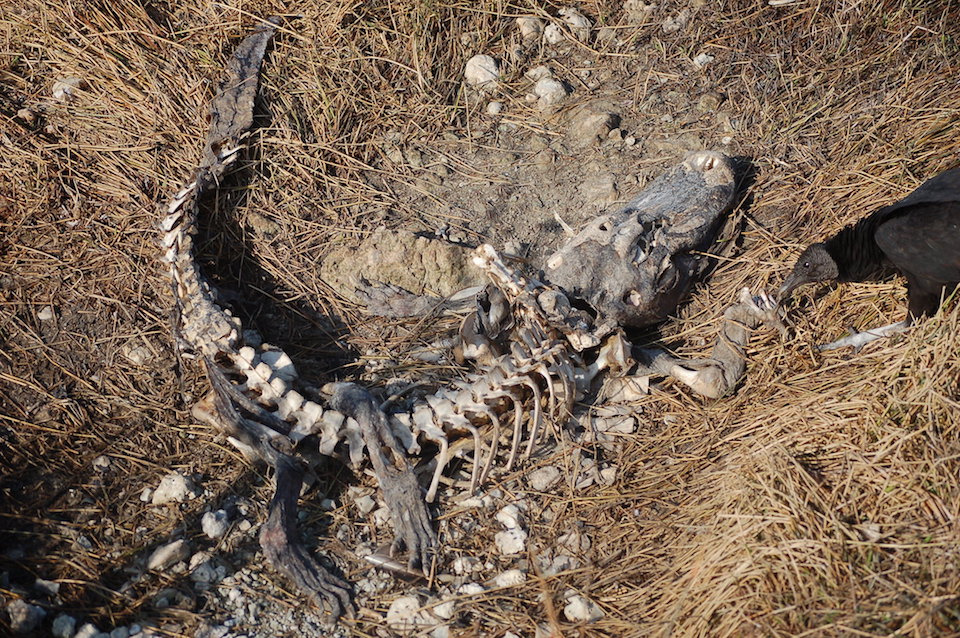- Altered Survival
Altered Species Fitness, Survival, and Risk of Extinction

Temperature and moisture availability are predicted to change, which can directly or indirectly affect species. As temperature or moisture variables reach or exceed species’ tolerance levels, species may have reduced reproductive success, recruitment, and lifespan. Increased levels of stress may cause some species to be more susceptible to disease and pests. Increased mortality may occur in sensitive species or in areas experiencing more extreme climatic changes.
Species that have limited ranges or dispersal ability, specialized habitat requirements, small populations and/or low genetic diversity are typically the most vulnerable to extinction. As environmental conditions change, these species may not be able to adapt and survive. Species with extensive ranges, long-range dispersal mechanisms, large populations and high genetic diversity are less likely to be at risk of extinction in a changing climate.
Impacts of Sea Level Rise:
- Increased mortality
- Increased isolation, particularly Keys/barrier island species
- Decreased genetic diversity – due to habitat fragmentation/population isolation
- Extinction
Impacts of Salinity Shifts:
- Decreased reproductive success in some fish
- Decreased survival rates, increased larval period and decreased size at metamorphosis in frogs due to lower pH
- Increased mortality
- Increased isolation
Impacts of Warmer Temperatures:
- Increased prevalence of disease and parasites
- Altered composition of parasite community
- Increased fish kills due to less dissolved oxygen
- Increased mortality
- Increased pathogen and vector survival and disease transmission rates
- Local extirpations of species at the southern extent of their range
- Increased growth rates of fish (potentially beneficial change)
- Loss of Alosine (shad) due to mortality and reduced reproductive success
Impacts of Increased Cold Events:
- Reduced fitness, recruitment, and competitive ability
- Increased mortality
- Reduced reproductive success due to delayed timing of reproduction
- Increased mortality for cold temperature sensitive species
- Increased occurrence and severity of cold kill events
Impacts of Decreased Precipitation:
- Increased avian mortality due to water loss
- Decreased reproductive success of amphibians
- Reduced reproductive success in birds due to decreased availability of arthropods
- Reduced fitness of freshwater species in tidal creeks due to increased salinity
- Increased mortality of fish and other aquatic species
- Decreased survival of amphibians in ephemeral ponds
- Increased isolation – lower genetic diversity
Impacts of Increased Precipitation:
- Increased mortality of amphibians
- Reproductive failure for ground-nesting birds due to flooding
- Decreased reproductive success of amphibians
- Increased mortality of larval stages of nearshore fish and invertebrate – decreased salinity
- Decreased survival and fitness of sensitive aquatic species due to increased flow of pollutants
- Altered recruitment success of inshore species due to fluctuations in salinity levels in nursery areas
- Reduced food source for aquatic species due to displacement of stored organic carbon
Impacts of Changes in Timing of Precipitation:
- Decreased survival/reproductive success of amphibians and invertebrates in ephemeral wetlands
- Decreased reproductive success of fish due to lack of connectivity to spawning grounds as timing of flood events change
- Increased mortality of larval stages of fish and invertebrates due to increased salinity as water chemistry in bays and estuaries change
Impacts of Changes in Frequency and Severity of Extreme Events:
- Increased mortality
- Reduced reproductive success and recruitment
- Increased stress due to reduction of food or cover
- Increased stress due to injury
- Disruption of life cycle events, e.g., migration, breeding
Impacts of Altered Water Chemistry:
- Increased stress
- Increased mortality
- Increased disease, pathogens, parasites
- Reduced reproductive success
- Increased mortality (events) in corals and shell-forming organisms
- Decreased growth due to reallocation of resources to maintain calcification
What's next?
Learn about altered phenology and physiology from changes in climate in Florida.